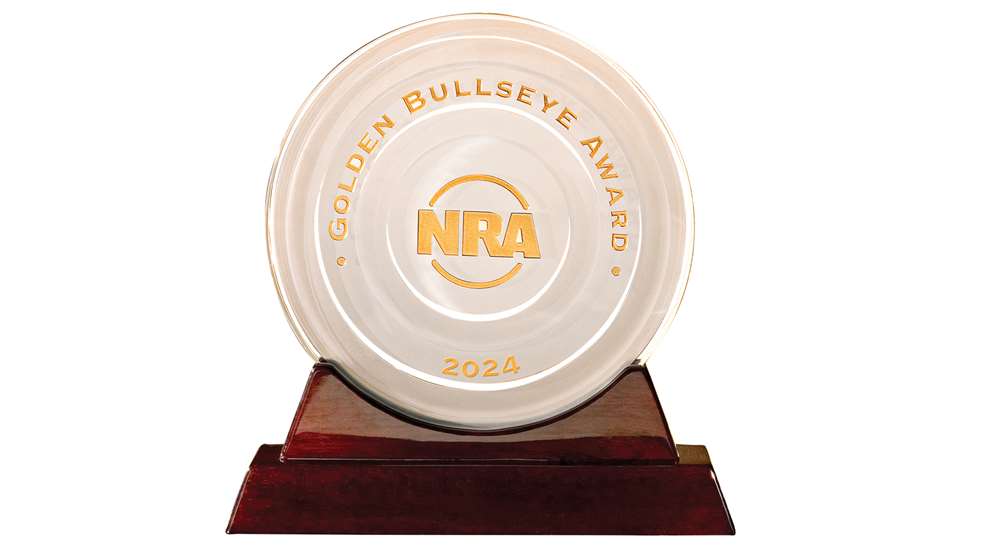Watch Recoil Management: Aimsteady

Recoil anticipation, the main cause of inaccuracy, is a multi-faceted beast. It is most commonly described as a fear of the handgun exploding suddenly and moving rapidly towards your face. And trying not to flinch is like trying not to blink when someone throws a shadow punch that stops just short of your face.
And there is a certain amount of truth to that. A good example, although I don’t know if it’s ever been properly scientifically tested, is to wear double hearing protection because the audible shock of the gunshot is another thing that people are afraid of. By cutting down on the sharp shock to the ears, you are less likely to flinch. I don’t know if it’s actually true but I have worn double hearing protection ever since I read it.
But let’s go back to the example of the shadow punch that stops just before your face where you try not to blink. Well try it with a friend. You do blink the first few times but once you get used to it and you concentrate, you don’t blink anymore. Your brain is smarter than you are! And it figures out things quite quickly.
I would propose another theory that it is at least as much about trying to control the timing of what’s happening. Let’s examine what happens after you squeeze the trigger. The firing spring moves forward and ignites the primer, which ignites the gunpowder, which propels the round along the barrel. It takes about 1 millisecond for the round to leave the barrel. And the slide has already started to move rearwards. It takes about 2 hundredths of a second for the slide to move rearwards before the springs push it forward again. So things happen quickly, some say it is too quickly for humans to be able to time correctly but I don’t think so. Think of a person playing tennis at a professional level, they are swinging at a ball that is moving at them at 150 miles per hour and they swing at it and hit it with such precise timing that they can pick the exact spot where it goes. That requires unbelievable timing. Even just good amateur players require millisecond timing to return a good shot.
So how can tennis players time things that well and people can’t do it for handguns? Well consider the training a good tennis player went through. It’s not that its more rigorous than shooting training, but every swing at a tennis ball that a tennis player has ever taken, they’ve seen the immediate result. It has either gone where they intended it to go or it hasn’t. Immediate feedback on every shot they ever hit. This immediate feedback allowed them to hone their timing to millisecond perfection.
So why can’t we get that level of control when shooting? Well consider the difference in feedback, if you fire 10 rounds rapidly (shooting slowly with the surprise break technique doesn’t count, see my separate blog post about it) you don’t know what shots were good or bad. The recoil of the gun can mask movement errors, so a good shot and a bad shot feel exactly the same. If you examine your target at the end of the session, seeing that you had 3 bad shots, if wouldn’t help you to be told which ones were the bad ones if you think you had the exact same holding pattern for them all. The correct moment to tell your brain that it made a mistake was at the moment that the mistake occurred.
That’s what happens with a tennis or golf swing; the immediate feedback of where the ball goes hones your brain to every mistake and allows much quicker progress.
So why does timing affect your accuracy so badly? Surely if you squeeze the trigger without affecting the movement of the gun, then the round should go where you aimed? Well, the problem is that often recoil anticipation is caused by trying to do two things at the same time, squeezing the trigger while immediately controlling the movement of the gun. But often we start to try to control the movement of the gun when we expect the gun to shoot, which is often a couple of hundreds of a second before it actually happens. In this case you’ve moved the gun just before the round was fired.
Recoil anticipation doesn’t just occur if your rounds land in a certain specific portion of the shooting wheel. I have stopped using the term “recoil anticipation” or “flinching” when speaking to people about shooting inaccuracy because they refuse to accept that this may be their problem. If I talk about the same issues but refer to them as “movement errors” then the same guys open up and tend to agree with me.
Check out David Kenik, author of the book Armed Response, talking about controlling the recoil
Read more at https://www.aimsteady.com/blog/recoil-anticipation-pre-ignition-push-vs-post-ignition-push






